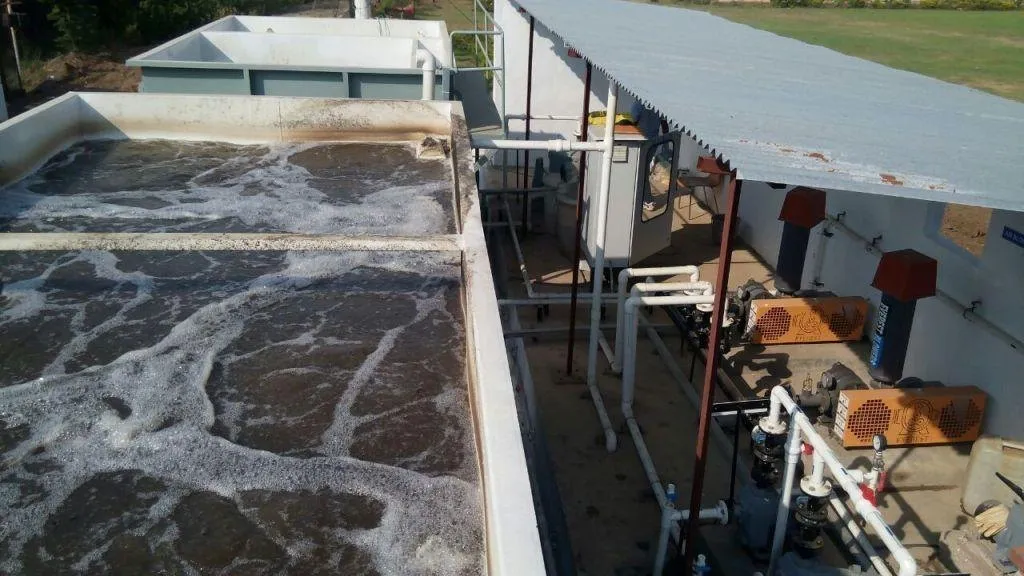The circulating water system of a power plant is a key link to ensure the safe and stable operation of the unit, and its water quality stability directly affects the efficiency and service life of the equipment. Traditional water treatment methods (such as chemical dosing) have problems such as high reagent costs, secondary pollution, and difficulty in treating wastewater discharge. Electrochlorination technology generates sodium hypochlorite (NaClO) by electrolyzing brine or seawater to achieve sterilization, scale inhibition, and desalination. It has the advantages of on-site generation, high automation, and environmental friendliness, and has become an important development direction for power plant circulating water treatment.

1. Technical Principles and Process Innovation
The core of electrochlorination technology is the electrolysis reaction: 2NaCl + 2H₂O → 2NaOH + Cl₂↑ + H₂↑. The generated Cl₂ reacts with water to form hypochlorous acid (HClO), which kills microorganisms through strong oxidizing properties. In recent years, technological innovations are mainly reflected in the following aspects:
(1) Electrolytic Adsorption Fusion Technology (EAFT)
Combining low-voltage electrolytic descaling, high-voltage electrostatic water treatment, and electrolytic adsorption to form a composite treatment system. For example, the low-voltage electrolytic descaling device upgrades the electrode to increase the alkalinity removal rate to over 90%. The high-voltage electrostatic field (26,000V) can inhibit carbonate scaling, and electrolytic adsorption realizes desalination and sterilization of circulating water discharge. A pilot test of a 2×350MW unit in a power plant showed that this technology increased the concentration ratio of circulating water, reduced the amount of reagents used, and reduced the difficulty of reusing discharged water.
(2) Optimization of Electrode Materials
New porous carbon electrodes (such as 3nm pore size carbon nanotubes) improve chlorine storage efficiency through adsorption-desorption of chlorine, with a capacity retention rate of 98% after 55,000 cycles. Nitrogen-doped porous carbon electrodes further enhance chloride ion capture capacity, with a desalination capacity of 38.1mg/g, providing a material basis for efficient electrochlorination reactions.
2. Application Advantages and Practical Cases
(1) Technical Advantages
- Efficient Sterilization: Sodium hypochlorite has a killing rate of over 99% for heterotrophic bacteria, sulfate-reducing bacteria, etc., and is not affected by pH value (4-9).
- Scale Inhibition and Desalination: The electrolysis process reduces the concentration of calcium and magnesium ions, and combined with electro-adsorption technology, the single-stage desalination rate is 30%-50%.
- Safety and Economy: On-site generation avoids the risk of chlorine transportation, and the operating cost is only 1/3-1/2 of that of chemical dosing. For example, a salt chlorinator only needs 4.5 yuan of salt to produce 1kg of chlorine, and the investment payback period is about 2 years.
(2) Typical Cases
- A 2×350MW unit in a power plant: After adopting EAFT technology, the alkalinity removal rate of circulating water exceeded 90%, the Cl⁻ concentration was stable below 500mg/L, the concentration ratio was increased, and the annual savings in reagent costs and wastewater treatment costs were significant.
- CLP Black Point Power Plant: After renovating the electrochlorination system, the sodium hypochlorite output increased by 44%, effectively controlling biological fouling, reducing the pressure of the cooling water pump by 6%, and saving approximately 1.6 million pounds annually.
- Covestro Spain Factory: Using ODC (Oxygen Cathode) technology, the energy consumption per ton of chlorine gas was reduced from 2800kWh to 1150kWh, reducing CO₂ emissions by 22,000 tons per year.
3. Challenges and Countermeasures
(1) Technical Challenges
- Energy Consumption Optimization: Traditional electrolysis methods have high energy consumption (about 2800kWh/ton of Cl₂), and it is necessary to reduce energy consumption through new electrode materials (such as titanium-based ruthenium-iridium coatings) and process designs (such as Deacon process).
- Water Quality Adaptability: High hardness or high organic matter water quality may affect electrolysis efficiency, and it is necessary to combine pretreatment (such as filtration) or other technologies (such as ultrasonic waves) to improve the effect.
- Electrode Life: Chloride ion corrosion may lead to electrode loss, so corrosion-resistant materials (such as titanium alloys) and regular maintenance are required.
(2) Solutions
- Intelligent Control: Real-time monitoring of water quality parameters (such as residual chlorine, pH value) through the Internet of Things, automatically adjusting current and electrolysis time to achieve precise dosing.
- Technology Integration: Combining electrochlorination with electro-adsorption, high-voltage static electricity and other technologies to form a synergistic treatment system to improve the ability to treat complex water quality.
- Material Innovation: Developing nano-coated electrodes and porous carbon chlorine storage materials to extend service life and improve current efficiency.
4. Future Development Trends
(1) Greenization and Low-Carbonization
Promote ODC technology and Deacon process to further reduce energy consumption and carbon emissions; explore renewable energy (such as solar energy)-driven electrochlorination systems to achieve full life cycle greenization.
(2) Intelligence and Modularization
Integrate water quality monitoring, automatic control, and remote operation and maintenance functions, and develop standardized and scalable modular equipment to meet the needs of power plants of different scales.
(3) Synergistic Treatment of Multiple Pollutants
Combine electrochemical oxidation-reduction technology to simultaneously remove nitrogen, phosphorus, and heavy metals, realizing advanced treatment and reuse of circulating water.
Electrochlorination technology has become the mainstream choice for power plant circulating water treatment due to its high efficiency, safety, and environmental protection characteristics. Through technological innovation and process optimization, its advantages in sterilization, scale inhibition, desalination, and carbon emission reduction will be further highlighted. Chlory has been committed to the development and application of electrochlorination technology. In the future, with the development of materials science and intelligent technology, electrochlorination technology is expected to play a greater role in energy conservation, emission reduction, and green transformation of power plants.
Note: The electro-chlorination system of Chlory Company is applied in the water treatment processes of municipal water treatment plants, sewage treatment plants, power plants, etc., and is sold to the United Arab Emirates, Iran, Iraq, South Africa, Brazil, Colombia, etc.
